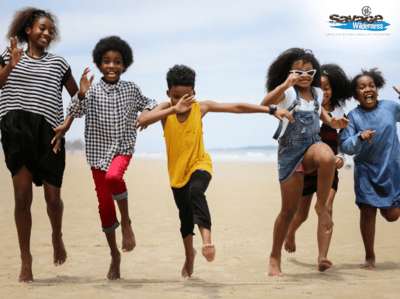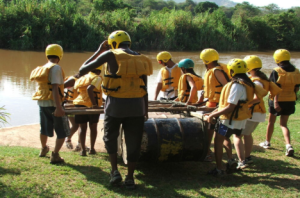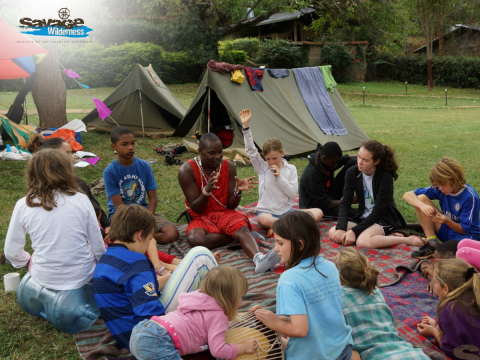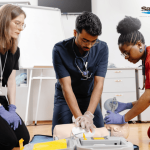
Choosing the Right First Aid Training Solutions for Your Organisation
September 20, 2025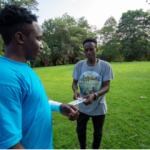
Why First Aid Training Solutions Are Essential for Every Business
November 12, 2025If you are planning for Local Kenyan School Educational Trips, you will be considering how to balance learning with safety, fun and value for money. A trip that connects students with nature and heritage in their own country is both inspirational and practical. This guide will take you through the basic steps to plan a school trip with learners to become “alive” and tangible learning experiences directly related to real-world learning.
1. Define clear educational goals
First you need to define what you want the students to learn. Local Kenyan school educational trips work really well when you are teaching about ecosystems, indigenous animals, cultures or geography. Identifying two or three very simple learning objectives are enough for example, to gain an understanding of a local habitat, to learn about indigenous plant life in the area or experiences of how communities live near or in a forest. Identifying meaningful and realistic learning objectives are essential for prioritising your choice of location, activities and resources.
2. Choose a relevant site or partner
Next, you will need to select a venue that frontloads your learning objectives. A local wilderness camp or wildlife adventure camp is recommended if the focus is wildlife or forests, and these types of experiences offer meaningful wilderness camping experiences artistically delivered by well trained outdoor professionals if you are aware of the differences. A wilderness camp that provides guided nature walks with knowledgeable staff is a great asset if your learning objectives are focused on understanding differences in habitat, while the adventure education camps provide challenges & learning experiences that involve skills based learning and physical exercise involving navigation, team building and basic survival skills. By adapting a structured learning approach while involving active learning and experiences.
3. Partner with a trusted provider
Engaging with a school-friendly provider gives you confidence of safety, amenable facilities, and the teaching approach they will take. For example, if you decide to go with Savage Wilderness Camp Kenya for your trip, their guide will be familiar with safety standards for school groups, and they have experience of local trips with learning components, practical outdoor activities, and environmental awareness.
4. Plan the schedule but keep some flexibility
Put together a rough timetable: arrival and introduction to group, learning session (i.e. a short talk about one or more of the local plants or animals), the guided walk or activity, lunch, another session or game, reflection time and departure. You also need to keep a little buffer time for delays or extra discussion. A flexible timetable is helpful if your group shows a lot of interest in an activity and wants to spend more time there.
5. Prepare educational materials
Simple resources will help, e.g. an easy to read fact sheet on the plants or animals you expect to see, a worksheet to make observations, or questions to guide discussion (“What differences do you see in types of trees? Why do people in local communities depend on the local forest?”). For local education excursion-type trips, when the content is linked directly to what students see and do on site, learning is often at its best.
6. Keep safety and logistics tight but practical
Have a clear permission form, emergency contacts and first-aid. If travelling by bus, check how experienced the driver is and that the bus is roadworthy. Inform parents of the basic plan, children’s clothing or need to bring items and how long you expect to be out. It’s reasonable preparation that will keep everything calm and clear.
7. Build time for reflection
Once the site visit is complete, make sure there is time back at school or just before the trip ends for the students to reflect. Ask students what they learned; what they were surprised by; what they might change if they were to do it again. Reflection is one way to embed knowledge and to gather feedback from students and teachers when planning Local Kenyan School Educational Trips for the future.
8. Evaluate and follow up
After everyone is back, consider whether you met the learning goals. Seek feedback from teachers and students. A basic evaluation sheet—“What have I learnt? What was the most fun? What could we do differently next time?”—even just helps with your next outing.
By being clear about your objectives; selecting a suitable place (wilderness or adventure camps etc); preparing resources; grappling with logistics and including a reflection time, your planning and running Local Kenyan School Educational Trips will become manageable and fun!
Why Choose Savage Wilderness for Your School Trip?
Savage Wilderness is experienced in delivering safe and purposeful trips for schools. They have ready-made learning modules that draw on Kenyan ecosystems, trained and adaptive guides that can shape the lessons to group needs, and camping facilities that allow for group dining, short indoor programs, and outdoor activities. Their locations are most accessible from many parts in Kenya which decreases travel time and costs. Since they focus on education based outings, they already offer tailored support to teachers and students – which simplifies processes and enhances educational results.
Ready to Make Your Next School Trip Memorable?
If you want a truly effective and easy-to-manage Local Kenyan School Educational Trip, please get in touch. Partner with a team that knows the land, cares for safety and shares your vision in providing young people real‑world learning based in the Kenyan Wilderness.
Book your next adventure for your school today – with Savage Wilderness!


